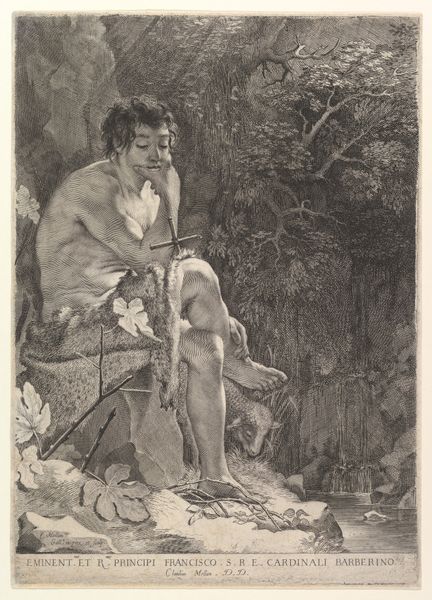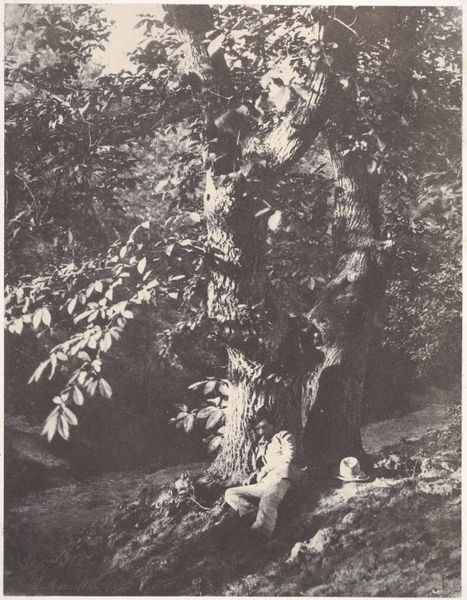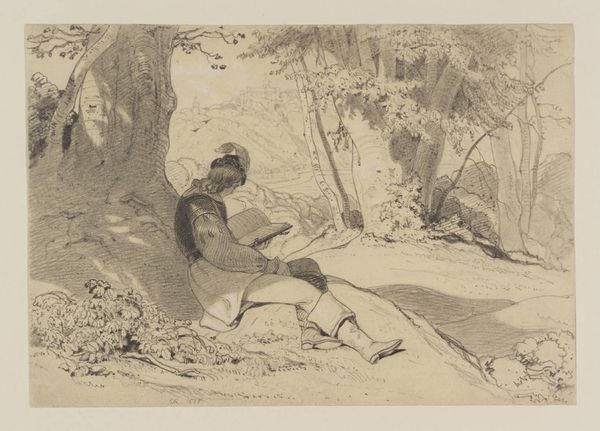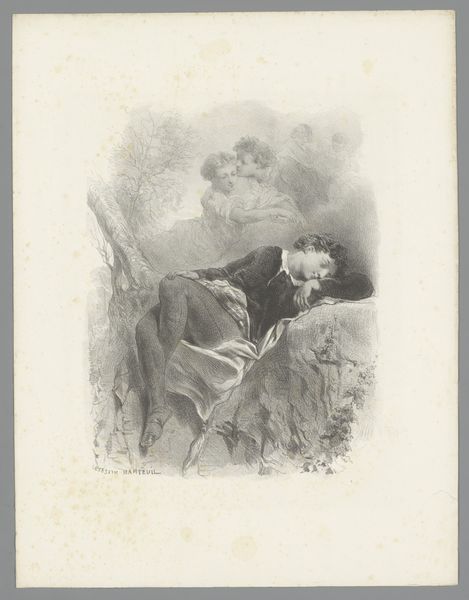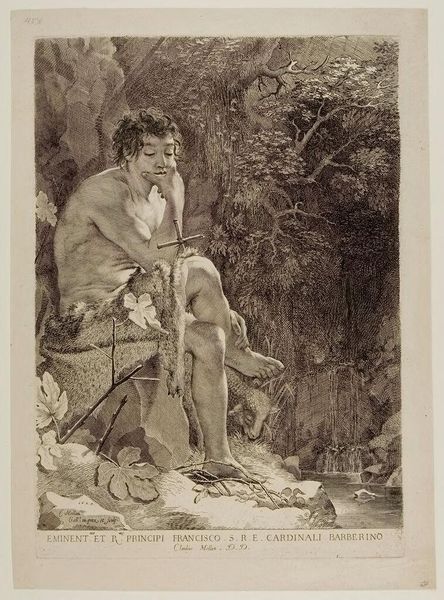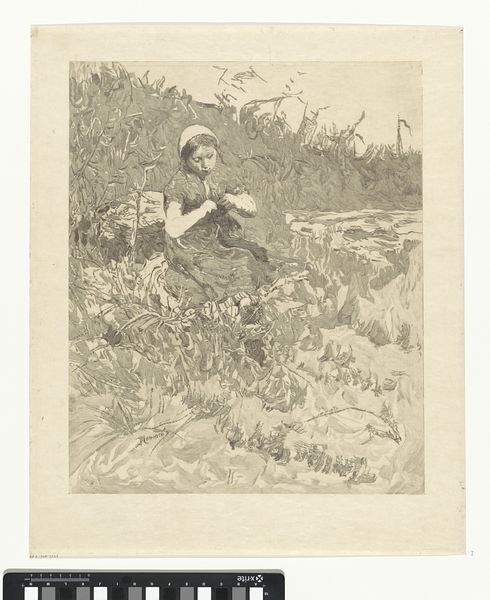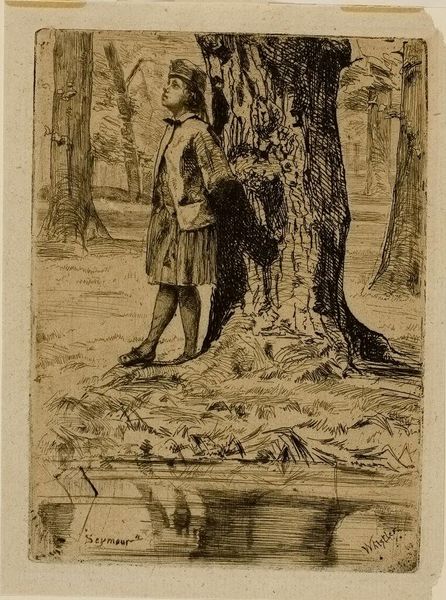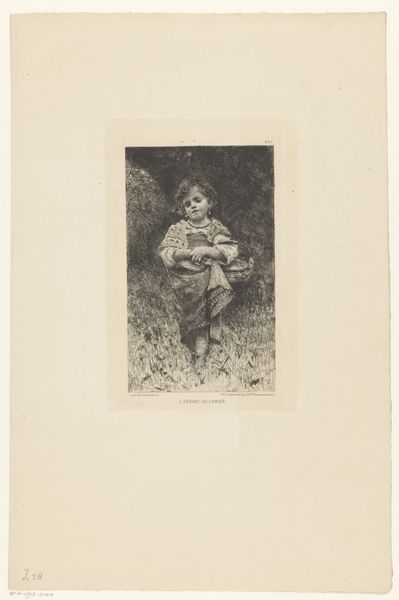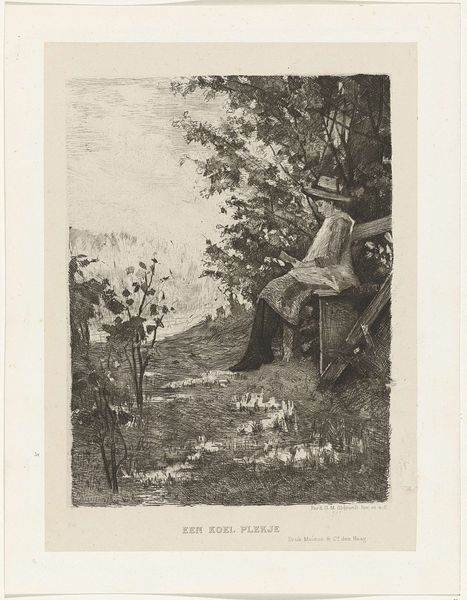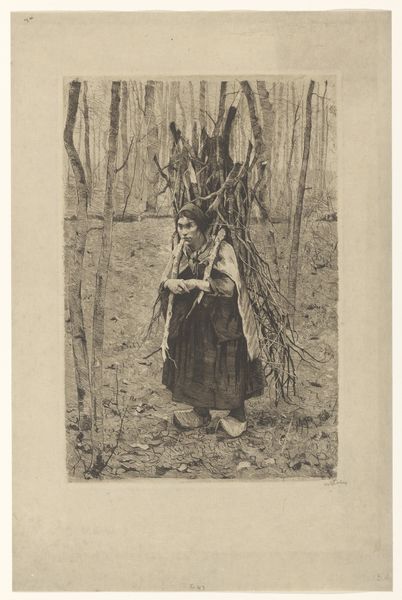
drawing, print, etching
#
portrait
#
drawing
# print
#
etching
#
landscape
#
academic-art
#
realism
Dimensions: image: 37.9 × 20.3 cm (14 15/16 × 8 in.) plate: 39.1 × 21.5 cm (15 3/8 × 8 7/16 in.) sheet: 50.5 × 31.8 cm (19 7/8 × 12 1/2 in.)
Copyright: National Gallery of Art: CC0 1.0
Curator: Here we have "The Willow Whistle," an etching by Ellen Day Hale, completed in 1888. What strikes you upon viewing it? Editor: The scale, firstly. Its vertical orientation and relatively small size for a landscape lends it an intimate quality, pulling us close to this solitary boy. The monochromatic palette enhances this feeling of quiet contemplation. Curator: Precisely. The artist's technical skill in rendering the textures is notable, isn’t it? Consider the bark of the tree versus the soft skin of the boy, or the airy foliage contrasted against his solid form. Hale utilizes varied line weights to create depth and volume in what is, ostensibly, a two-dimensional surface. Editor: I’m drawn to the symbology of the tree as haven, a space between earth and sky for childhood reverie. He's not merely sitting, he's enthroned. His flute playing also speaks of a self-contained world of expression. The 'willow' also traditionally has complex associations of sorrow, mourning, magic, and healing—perhaps reflecting the complexity of youthful self-discovery. Curator: An astute observation. Hale carefully positions the figure in a compositional triangle formed with the branches, further stabilising him within this imagined realm. Note how the horizon line is barely suggested— a framing mechanism which encourages our full attention to rest solely upon the boy and his immediate surroundings. Editor: I see a possible echo of the pan-pipes, music made with found organic materials for celebration and transcendence in both Greek and Roman iconography. Despite the small, delicate gestures, a whole hidden story might be waiting just beneath the surface. Curator: The beauty, ultimately, resides in the balanced visual syntax. Ellen Hale provides the viewer a landscape of quietude—a perfectly poised etching within its inherent constraints. Editor: Indeed, this work demonstrates how common human experiences can be layered with universal myths. It remains striking today, as relevant and enigmatic as when it was made.
Comments
No comments
Be the first to comment and join the conversation on the ultimate creative platform.

